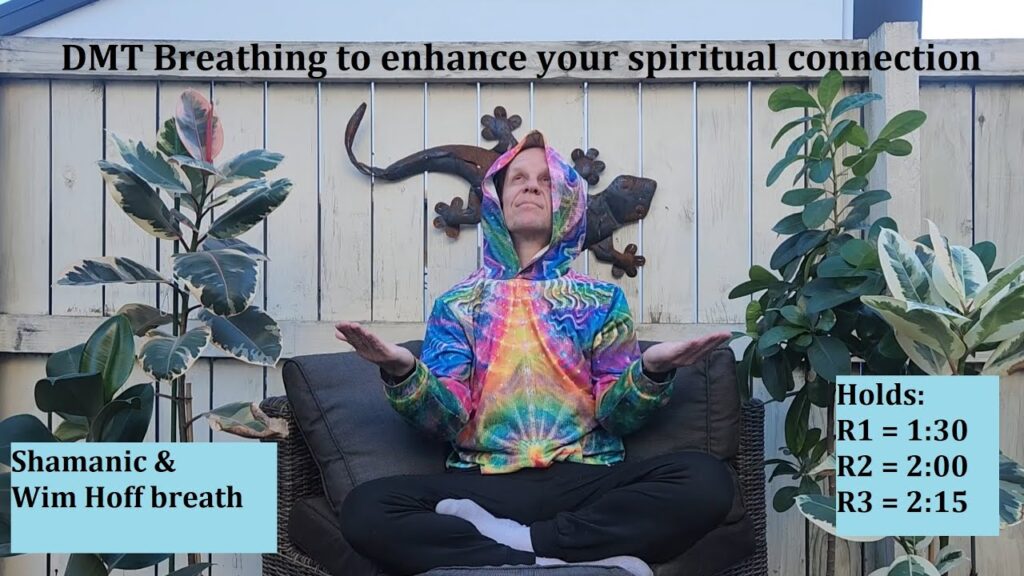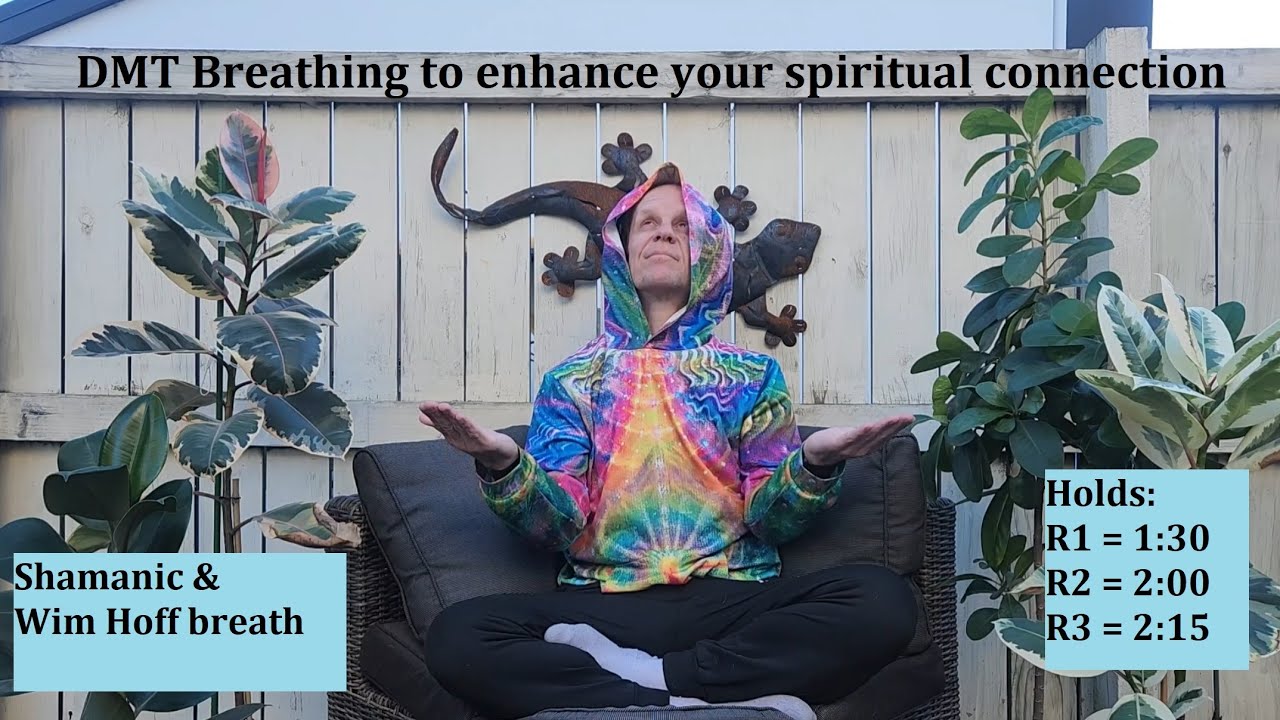
DMT Breathing: Exploring the Science and Benefits of this Transformative Technique
In recent years, a unique and increasingly popular breathing technique known as DMT breathing has captured the attention of wellness enthusiasts, spiritual seekers, and even the scientific community. While the name evokes the powerful psychedelic compound dimethyltryptamine (DMT), DMT breathing doesn’t involve any exogenous substances. Instead, it focuses on specific breathing patterns to potentially induce altered states of consciousness and promote various physiological and psychological benefits. This article delves into the science behind DMT breathing, explores its purported benefits, and provides a balanced perspective on its potential risks and limitations.
What is DMT Breathing?
DMT breathing is a non-drug-induced breathing technique designed to stimulate the body’s natural processes to achieve a state of heightened awareness and altered perception. It typically involves a combination of rapid, deep breaths followed by breath retention. Different variations exist, but the core principle remains the same: to manipulate oxygen and carbon dioxide levels in the body, influencing brain activity and potentially triggering experiences similar to those associated with DMT itself, although at a much lower intensity. It’s crucial to understand that DMT breathing does not introduce DMT into the body; rather, it aims to mimic some of its effects through physiological changes.
The Science Behind DMT Breathing
The physiological effects of DMT breathing stem from several key mechanisms:
- Hyperventilation: Rapid, deep breathing leads to hyperventilation, which decreases carbon dioxide levels in the blood (hypocapnia).
- Hypocapnia: Low carbon dioxide levels cause blood vessels in the brain to constrict, reducing blood flow. This can lead to altered brain activity and potential feelings of lightheadedness, tingling sensations, or even visual disturbances.
- Oxygenation: While hyperventilation decreases CO2, it also increases oxygen levels (hyperoxia), though the body’s ability to utilize this extra oxygen is limited by the reduced blood flow.
- Autonomic Nervous System Modulation: Breathing techniques can influence the autonomic nervous system, which controls involuntary functions like heart rate and digestion. DMT breathing may activate the parasympathetic nervous system (the “rest and digest” system), promoting relaxation and reducing stress.
- Endorphin Release: Deep breathing exercises can stimulate the release of endorphins, natural pain relievers and mood elevators, contributing to feelings of well-being and euphoria.
While these physiological changes are well-documented, the exact mechanisms by which DMT breathing might induce altered states of consciousness are still under investigation. Some researchers hypothesize that the combination of reduced blood flow, altered oxygen levels, and autonomic nervous system modulation could temporarily disrupt normal brain function, leading to subjective experiences similar to those reported with DMT. [See also: Holotropic Breathwork: A Similar Technique] However, it’s important to emphasize that the intensity and nature of these experiences are typically much milder and more controllable than those induced by exogenous DMT.
Reported Benefits of DMT Breathing
Proponents of DMT breathing report a wide range of potential benefits, including:
- Stress Reduction: The activation of the parasympathetic nervous system can help reduce stress and anxiety.
- Improved Mood: Endorphin release can lead to feelings of well-being and euphoria.
- Enhanced Creativity: Altered states of consciousness may unlock new perspectives and foster creative thinking.
- Emotional Release: Some practitioners report experiencing emotional breakthroughs and releasing repressed emotions during DMT breathing sessions.
- Spiritual Exploration: For some, DMT breathing can facilitate a sense of connection to something larger than themselves and provide insights into their own spirituality.
- Increased Self-Awareness: The introspective nature of the practice can promote greater self-awareness and understanding.
It’s important to note that these benefits are largely based on anecdotal evidence and personal experiences. More rigorous scientific research is needed to confirm these claims and understand the long-term effects of DMT breathing.
Potential Risks and Limitations
While DMT breathing is generally considered safe for healthy individuals when practiced correctly, it’s essential to be aware of the potential risks and limitations:
- Hyperventilation Symptoms: Hyperventilation can cause lightheadedness, dizziness, tingling sensations, and even fainting.
- Anxiety and Panic: For some individuals, the altered state of consciousness induced by DMT breathing can trigger anxiety or panic attacks.
- Seizures: In rare cases, hyperventilation can trigger seizures in individuals with a predisposition to them.
- Not Suitable for Everyone: DMT breathing is not recommended for individuals with certain medical conditions, including cardiovascular problems, respiratory issues, epilepsy, and a history of severe mental illness.
- Lack of Scientific Evidence: While anecdotal evidence is promising, more scientific research is needed to validate the purported benefits of DMT breathing.
- Overhyping the Effects: It’s important to avoid overhyping the effects of DMT breathing. While it can induce altered states of consciousness, these experiences are typically much milder and more controllable than those induced by psychedelic substances.
Before attempting DMT breathing, it’s crucial to consult with a healthcare professional, especially if you have any underlying medical conditions. It’s also recommended to start with guided sessions led by experienced practitioners to learn the proper technique and minimize the risk of adverse effects.
How to Practice DMT Breathing (Safely)
If you’re interested in exploring DMT breathing, here are some general guidelines for practicing it safely:
- Consult with a Healthcare Professional: Before starting any new breathing exercise, consult with your doctor to ensure it’s safe for you.
- Find a Qualified Instructor: Seek out a certified breathwork facilitator who has experience with DMT breathing or similar techniques.
- Start Slowly: Begin with shorter sessions and gradually increase the duration as you become more comfortable.
- Choose a Safe Environment: Practice in a quiet, comfortable, and safe environment where you won’t be disturbed.
- Lie Down: It’s generally recommended to practice DMT breathing lying down to prevent falls if you become lightheaded.
- Focus on Your Breath: Pay attention to your breath and try to maintain a steady, rhythmic pattern.
- Listen to Your Body: If you experience any discomfort or adverse effects, stop immediately.
- Don’t Force It: If you’re not feeling comfortable or relaxed, don’t force yourself to continue.
- Ground Yourself Afterwards: After the session, take some time to ground yourself by connecting with your senses and engaging in calming activities.
The Future of DMT Breathing
As interest in alternative wellness practices continues to grow, DMT breathing is likely to become even more popular. While more scientific research is needed to fully understand its mechanisms and benefits, anecdotal evidence suggests that it can be a valuable tool for stress reduction, emotional release, and spiritual exploration. However, it’s crucial to approach DMT breathing with caution, awareness, and respect for its potential effects. By practicing it safely and responsibly, individuals can potentially unlock its transformative power and enhance their overall well-being. The key is to remember that DMT breathing is not a replacement for traditional medical treatments but rather a complementary practice that can be integrated into a holistic approach to health and wellness. The exploration of DMT breathing is ongoing, and future research will undoubtedly shed more light on its potential applications and limitations. Whether you’re seeking stress relief, emotional healing, or a deeper connection to yourself, DMT breathing offers a unique and potentially powerful pathway to explore the depths of your own consciousness. [See also: The Wim Hof Method: Another Powerful Breathing Technique]
Conclusion
DMT breathing represents a fascinating intersection of ancient breathing practices and modern understanding of physiology and consciousness. While the name might be misleading, suggesting a connection to the psychedelic DMT, the technique itself relies on manipulating the body’s own systems to achieve altered states of awareness. While more research is necessary to fully validate its benefits, anecdotal evidence points to potential improvements in stress reduction, mood enhancement, and spiritual exploration. As with any powerful technique, responsible practice, guided instruction, and awareness of potential risks are paramount. Approaching DMT breathing with a balanced perspective allows individuals to explore its potential benefits while mitigating any potential harm, ultimately contributing to a more holistic and informed approach to personal well-being.

